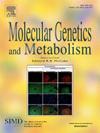Newborn screening follow-up for very long-chain acyl-CoA dehydrogenase deficiency in Colorado: Working towards a standardized protocol
IF 3.7
2区 生物学
Q2 ENDOCRINOLOGY & METABOLISM
引用次数: 0
Abstract
Very long chain acyl-CoA dehydrogenase deficiency (VLCADD) is an autosomal recessive fatty acid β-oxidation disorder that has been identified by newborn screening (NBS) in most states since the early 2000s. Despite over 20 years of experience, there are aspects of VLCADD NBS that remain challenging. We conducted a retrospective chart review of abnormal NBS for VLCADD in Colorado between 2017 and 2023. We analyzed confirmatory plasma acylcarnitine profiles (P-ACP), genetic sequencing of ACADVL, Collaborative Laboratory Integrated Reports (CLIR) scores, patient enzyme analysis of VLCAD, and cell-based variant expression analysis. A real-world “Clinical Designation” was then compared to a variety of algorithms trialed on the data. Of the 67 infants with abnormal screens during this timeframe, 5 (7 %) had a Clinical Designation of affected, 4 (6 %) remained unclassified, and 58 (87 %) were discharged based on a designation of unaffected. A Kruskal-Wallis rank sum test showed the biomarker with the best discrimination between affected and unaffected individuals was C14:1/C12:1 [chi-squared 10.4 (p = 0.001)]. The highest performing algorithm was (Molecular testing + cell-based expression) + (P-ACP C14:1 OR P-ACP C14:1/C12:1). Excluding the missing data, this algorithm showed 96 % (46 of 48) agreement with the Clinical Designation. We conclude that there is not a single biomarker that can specifically discern affected from unaffected individuals who screen positive on NBS for VLCADD. Thus, we developed a standardized diagnostic approach to more accurately classify patients that starts with the molecular findings and requires at least one of the P-ACP C14:1 or P-ACP C14:1/C12:1 to agree with molecular findings. The algorithm needs to be trialed with a different data set, and will advance the conversation around maximizing benefits and minimizing harms for infants who screen positive for VLCADD.
科罗拉多州长链酰基辅酶a脱氢酶缺乏症新生儿筛查随访:努力制定标准化方案
甚长链酰基辅酶a脱氢酶缺乏症(VLCADD)是一种常染色体隐性脂肪酸β氧化障碍,自21世纪初以来在大多数州通过新生儿筛查(NBS)发现。尽管有超过20年的经验,VLCADD NBS的一些方面仍然具有挑战性。我们对2017年至2023年科罗拉多州VLCADD异常NBS进行了回顾性图表回顾。我们分析了验证性血浆酰基肉碱谱(P-ACP)、ACADVL基因测序、协作实验室综合报告(CLIR)评分、VLCAD患者酶分析和基于细胞的变异表达分析。然后,将现实世界的“临床指定”与数据上试验的各种算法进行比较。在这段时间内,67名筛查异常的婴儿中,5名(7%)的临床诊断为受影响,4名(6%)仍未分类,58名(87%)的诊断为未受影响而出院。Kruskal-Wallis秩和检验显示,患病个体和未患病个体之间的最佳区分生物标志物为C14:1/C12:1[卡方10.4 (p = 0.001)]。表现最好的算法为(分子检测+细胞表达)+ (P-ACP C14:1或P-ACP C14:1/C12:1)。排除缺失的数据,该算法显示96%(46 / 48)与临床指定一致。我们得出的结论是,没有单一的生物标志物可以特异性地区分NBS筛查VLCADD阳性的受影响个体和未受影响个体。因此,我们开发了一种标准化的诊断方法,以更准确地对患者进行分类,从分子发现开始,需要至少一种P-ACP C14:1或P-ACP C14:1/C12:1与分子发现一致。该算法需要在不同的数据集上进行试验,并将推动围绕VLCADD筛查阳性婴儿的利益最大化和危害最小化的讨论。
本文章由计算机程序翻译,如有差异,请以英文原文为准。
求助全文
约1分钟内获得全文
求助全文
来源期刊

Molecular genetics and metabolism
生物-生化与分子生物学
CiteScore
5.90
自引率
7.90%
发文量
621
审稿时长
34 days
期刊介绍:
Molecular Genetics and Metabolism contributes to the understanding of the metabolic and molecular basis of disease. This peer reviewed journal publishes articles describing investigations that use the tools of biochemical genetics and molecular genetics for studies of normal and disease states in humans and animal models.
 求助内容:
求助内容: 应助结果提醒方式:
应助结果提醒方式:


